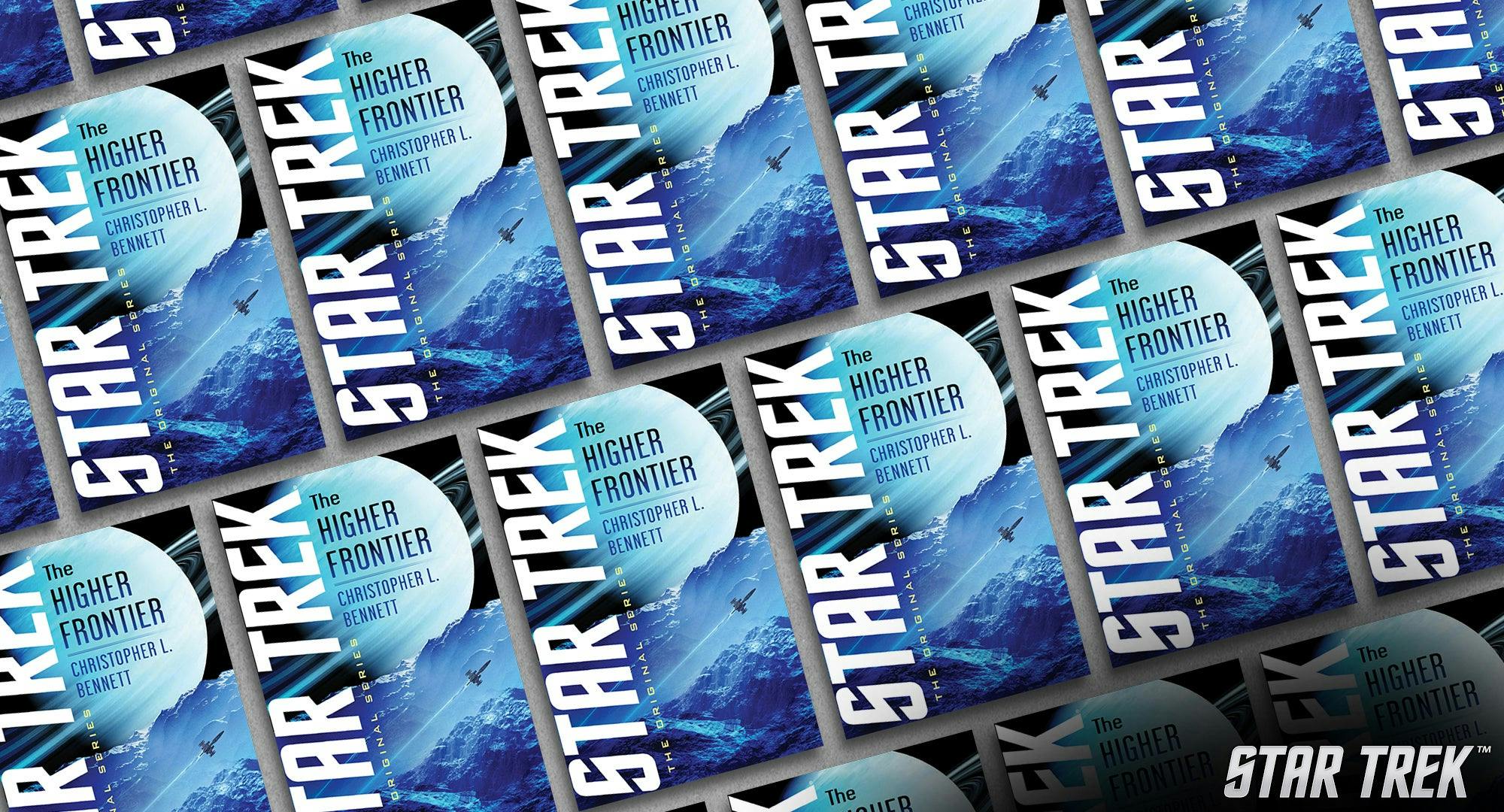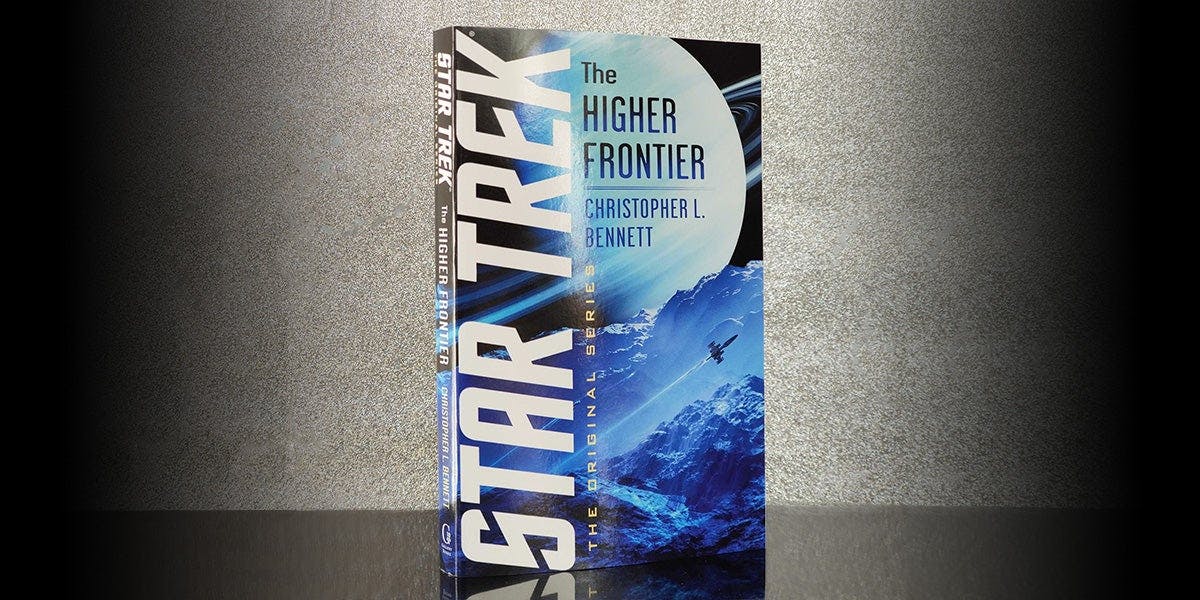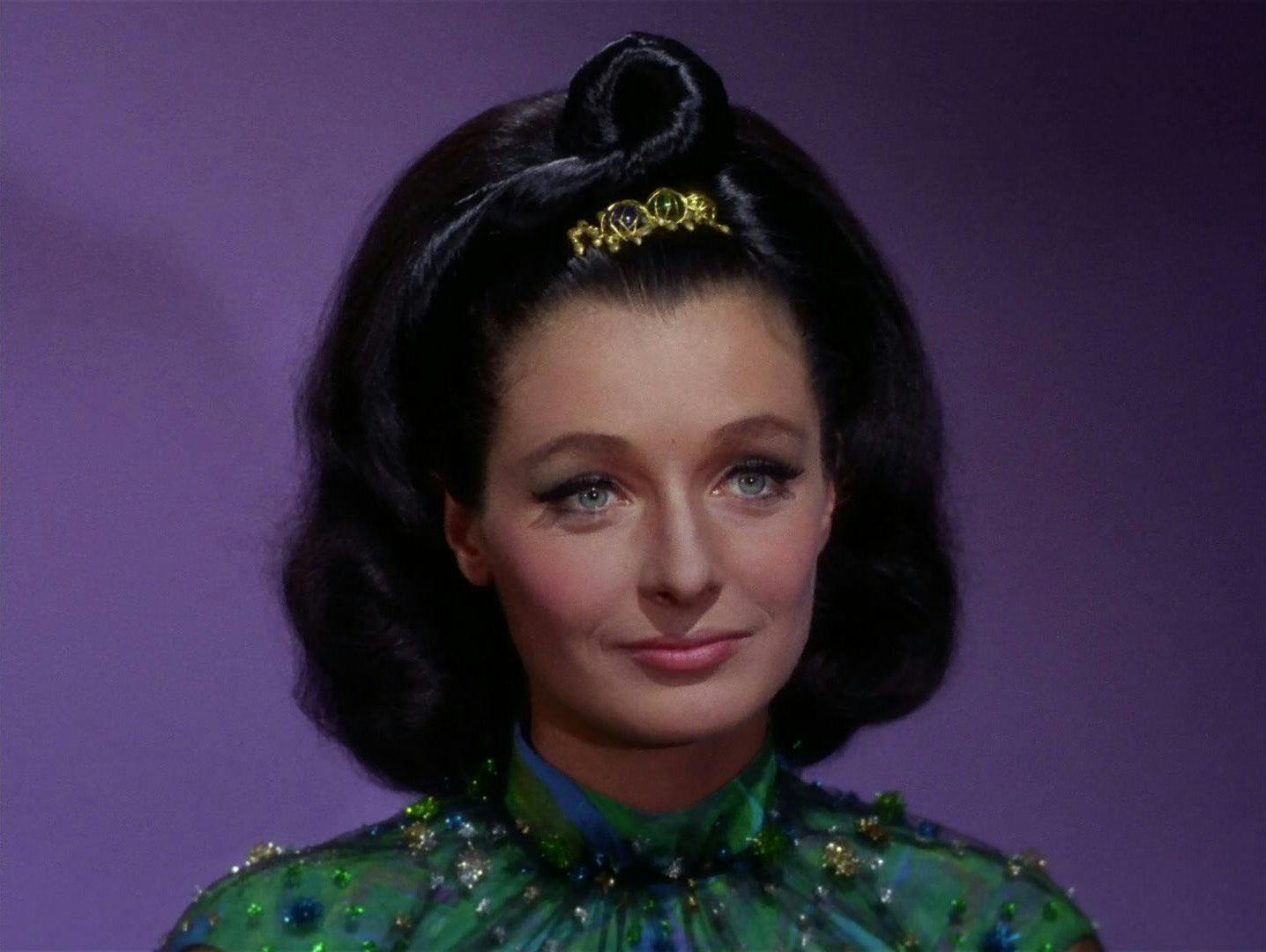Published May 14, 2020
Star Trek's Higher Frontier is Out Now
Author Christopher L. Bennett discusses his new book, Higher Frontier, with StarTrek.com.

StarTrek.com
There’s nothing like joining a mission with Captain James T. Kirk and the crew of the U.S.S. Enterprise. And if you’re ready for just that adventure, look no further than Star Trek: The Original Series: The Higher Frontier. Fans of TOS will be delighted to see Miranda Jones on the page and will undoubtedly enjoy the expansion on the episode “Is There in Truth No Beauty?”
We had a chance to catch up with Star Trek author Christopher L. Bennett about all things Trek and writing his latest novel The Higher Frontier.
StarTrek.com: You’ve written several Star Trek novels across several Star Trek series. What do you like most about writing Star Trek books? Do you have a favorite series?
Christopher L. Bennett: I suppose what I enjoy most is the chance to delve behind the scenes, as it were — to expand on what we’re shown onscreen and fill in the gaps, explore the possibilities only hinted at, and tie things together into larger patterns. The first Star Trek novels I ever read were Alan Dean Foster’s adaptations of The Animated Series, in which he expanded greatly on the episodes, fleshed out their background, tied them together into a unified narrative, and eventually even added entire original sequels to the aired episodes. I suppose they influenced my interest in fleshing out the in-between stuff.
As for favorites, I’ve inherited my father’s resistance to the idea of picking a single favorite, since one can like multiple things for different reasons. But The Original Series and The Animated Series were my first (I discovered them so close together in my childhood that I thought of them as a single continuous whole that was sometimes live-action and sometimes animated), so in many ways I find the original cast the easiest one to write for. I know their voices so well that they practically write themselves.

StarTrek.com
What is your earliest Star Trek memory?
CBL: My earliest memory is of my five-year-old self seeing promos for ST reruns on TV and being curious about them, and then my mother and father letting me stay up with them in their bed a few nights later and watch it with them. I didn’t know what I was seeing at first; I thought the Enterprise was a weird-looking airplane that only flew at night, and that the “planets” it visited were some kind of islands. Star Trek introduced me to space, science, and science fiction and set the course of my life. My memory is pretty vague about most things from my childhood, but I still remember seeing Star Trek for the first time, and even that my first episode was “The Corbomite Maneuver,” which is still my favorite TOS episode to this day.Who is your favorite Star Trek character to write? Is there a Star Trek character you identify with the most?
CBL: I’ve always identified most with Spock, for I often felt like an outsider growing up, and I come from a family of intellectuals where the men tend to be stoic and reserved. When I lost my mother at age seven, I tried to retreat into Vulcan emotionlessness, which only kept me from dealing with my emotions and made things harder on me. Eventually, when Star Trek: The Motion Picture came out and Spock had his epiphany of the value of emotion, I came to a similar realization around the same time, and though I don’t remember for certain, it may well have been influenced by Spock’s insight. I think that’s part of the reason TMP has always been important to me, and why I wanted to explore Spock’s journey in the wake of TMP, as I’ve done in Ex Machina and subsequent tales up through The Higher Frontier.
As far as a favorite one to write, again, I can’t pick just one. Kirk, Spock, and McCoy have been the voices in my head for over four decades now, shaping me as a person, so I relate to all of them in different ways and feel comfortable writing from all three of their viewpoints.
What was it like writing Star Trek: The Original Series: The Higher Frontier? What do you like most about this timeline?
CBL: I think I’ve already partly answered that. But I’ve always loved the TMP era for its untapped potential. TMP was the most visually stunning and conceptually imaginative Star Trek movie, and I loved the designs of the ship and the multi-species crew we glimpsed, the elaborate worldbuilding that gave a rich sense of a whole world that the movie barely started to explore. And then subsequent movies basically ignored it and jumped forward a decade or more. So I’ve always wanted to flesh out that era and try to recapture its unique flavor. I’m glad I’ve gotten the occasional opportunity to do that over the years, and that I’ve finally been able to return to that era in full force now.
Empaths and telepaths are not new to the Star Trek universe. The Medusans and Miranda Jones appeared in “Is There in Truth No Beauty?” season 3, episode 5. Why did you decide to revisit these characters?
CBL: When I was given the nod to revive my post-TMP continuity, I went back through my old notes in search of story concepts. One of my main ideas was to tell a story exploring the “new humans” mentioned in Gene Roddenberry’s TMP novelization, a human subculture developing their mental powers, exploring collective consciousness, and doing other very 1970s New Age-y stuff like that. My original idea had been to reveal that Gary Mitchell from “Where No Man Has Gone Before” was still alive and was behind the New Human movement. But in the interim, there have been one or two stories about Gary Mitchell coming back (for instance, in Marvel’s Star Trek/X-Men crossover comic in the ‘90s), so I chose to go a different route. A number of my books have tackled some of Trek’s more implausible concepts and tried to make greater sense of them, as with space-going life forms in Titan: Orion’s Hounds and time travel in my Department of Temporal Investigations books. This was my chance to do the same with the Trek universe’s telepaths.

StarTrek.com
It occurred to me that a story about human telepaths should involve Miranda Jones, the most powerful human telepath known, and also explore why there didn’t seem to be any human telepaths in the 24th century. Bringing back Miranda and Kollos let me explore a lot of unanswered questions about the Medusans, the galactic barrier, and so forth, and that let me address Gary Mitchell in an entirely different way than I’d initially planned. It also let me tie in with the fate of the Aenar, which Typhon Pact: Paths of Disharmony established as having apparently gone extinct around the time frame I was working in. It occurred to me that if the Medusans were looking for blind telepaths, they would have probably been interested in the Aenar as well, so that let me draw a connection.
Do you have any book recommendations for Star Trek fans?
CBL: Let’s see... The Culture series by Iain M. Banks might be a good option. They portray a utopian galactic civilization that’s a lot like the Federation, if it were a far more ancient and advanced society with ubiquitous artificial intelligence. And it tends to focus on the organization within the Culture that deals with the more ethically ambiguous situations that arise in dealing with non-Culture powers. David Brin’s Uplift series is also a pretty cool space opera with lots of interesting aliens and galactic politics.
What are you working on next?
CBL: I’ve got a variety of projects on my plate, Star Trek and otherwise, including more game scenarios for the Star Trek Adventures tabletop role-playing game. My next two original novels, the duology Arachne's Crime and Arachne's Exile, have just been successfully funded on Kickstarter and should be available soon from eSpec Books. Plus I’ve recently started a Patreon site featuring TV/movie reviews and original short fiction.
This interview has been edited and condensed. Learn more and order the trade paperback, ebook or audio download here.

